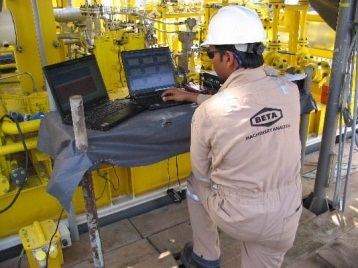Services
- Static Equipment & Structures (Piping Vibration & Fatigue)
- Acoustic Fatigue Assessment for Blowdown Systems
- Acoustic-Induced Vibration (AIV) Analysis
- Finite Element Analysis (FEA) and Computational Fluid Dynamics (CFD)
- Flow-Induced Turbulence (FIT) Analysis
- Flow-Induced Vibration (FIV) Analysis
- Multiphase and Slug Flow Analysis
- Pipe Stress Analysis
- Piping Vibration and Integrity Assessment
- Review & Design Support Services
- Small-Bore Connections (SBC) Assessment
- Structural Vibration and Dynamic Design Analysis
- Subsea Piping Vibration
- Thermal Striping
- Tube Failure Analysis
- Veridian AM
- Veridian VS
- Vibration Inspection Program
- Water Hammer Analysis
- Machinery Analysis
- Bottle Sizing Service
- Compressor Package Engineering
- Finite Element Analysis (FEA) and Computational Fluid Dynamics (CFD)
- Foundation Design and Dynamic Analysis
- Fuel Gas Compressor Piping Transient Analysis
- Lateral Vibration Analysis
- Pipe Stress Analysis
- Pulsation & Mechanical Analysis: Reciprocating Compressor
- Pulsation & Mechanical Analysis: Reciprocating Pump
- Pulsation & Mechanical Analysis: Screw Compressor
- Pump RCF Analysis
- Review & Design Support Services
- Shell Transverse Acoustical (STA) Analysis
- Skid Design and Analysis
- Surge Control Design for Centrifugal Compressor Systems
- Torsional Vibration Analysis (TVA)
- Field Engineering & Troubleshooting
- Finite Element Analysis (FEA) and Computational Fluid Dynamics (CFD)
- Human Vibration
- Motion Amplification Vibration Analysis
- Noise Troubleshooting
- Performance Assessment (Thermodynamic)
- PostPro – field data processing and analysis
- Structural Vibration Troubleshooting
- Thermal Striping
- Troubleshooting, Root Cause Analysis (RCA)
- Veridian iDAC
- Vibration Inspection Program
Piping Vibration and Integrity Assessment
Piping vibration analysis per EI 2008 Guidelines for the avoidance of vibration-induced fatigue failure (AVIFF).
Piping systems are subject to vibration-induced failures. To mitigate this integrity risk, a piping vibration assessment is conducted during the design phase and high-risk locations are tested during the operations phase. This piping vibration analysis (assessment) is based on the Energy Institute (EI) AVIFF Guidelines and other applicable methodologies and makes up an important part of an Asset Integrity Management (AIM) system.
Read more about Why to Include Vibration Integrity in Your AIM Program (PDF)
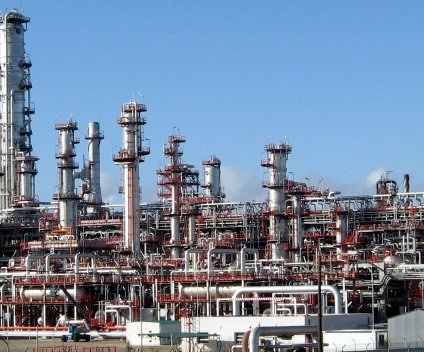
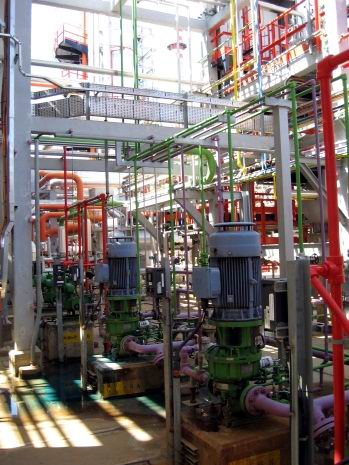
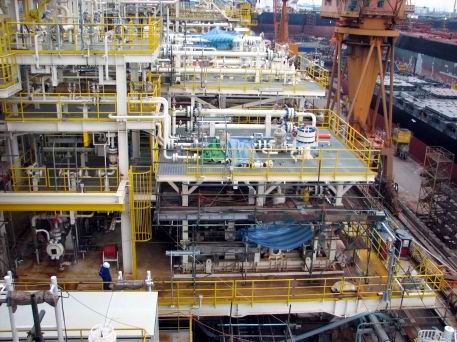
The Energy Institute AVIFF Guideline is the recommended approach to identify and resolve piping vibration risks. Wood has extensive expertise in pipe stress analysis, dynamic vibration analysis, transient flow, and other related design studies. Our unique approach is based on decades of actual field experience (troubleshooting) to solve piping vibration problems – a unique advantage in the design industry.
Contents [ hide ]
- 1 Background
- 1.1 What is piping vibration?
- 1.2 Why should I care about piping vibration?
- 1.3 What piping is most at risk?
- 1.4 Where does piping vibration come from?
- 1.5 How can I address piping vibration?
- 2 Piping Vibration Risks in Onshore and Offshore Facilities
- 3 Overview
- 4 Piping Vibration and Integrity Assessment - Scope
- 5 Wood Advantages
- 6 Summary
- 7 Free webinar
- 8a Related Information
- 8b Related Services
- 9 Keywords
1 Background
Piping vibration problems are a reality at onshore or offshore production facilities, pipeline stations, refineries, and petrochemical plants. Facility owners are extremely sensitive to these integrity risks because of the significant consequences associated with product releases from ruptured piping.
 |
| Severe safety and environmental consequences of piping fatigue failures. |
Recent examples in the press highlight situations where piping failures caused explosions, loss of life, environmental damage due to onshore and offshore spills, lawsuits, and facility shutdowns.
Vibration can cause reliability problems on equipment, fatigue failure on process piping, and small branch connections including relief lines, instrumentation ports, nozzles, drains, and valves. Vibration on compressor and pump packages is also a reliability issue but is addressed in separate scopes of work.
1.1 What is piping vibration?
Piping vibration is simply the movement of pipe away from its static, at-rest position. Some vibration can be seen by the naked eye, some vibration can be felt or heard, and some vibration occurs only occasionally under certain operating conditions, and may not be recognized until a piping failure has occurred.
1.2 Why should I care about piping vibration?
21% of hydrocarbon releases are due to vibration-induced fatigue failures (UK Health & Safety Executive). These releases can have a significant impact on public and employee safety, the environment, production and financial performance.
The piping system is by far the leading source of failures in facilities (Marsh & McLennan). This is in part due to the sheer quantity of piping in facilities, but also due to inadequacies in integrity programs to consider vibration and fatigue. The situation is compounded by the fact that commonly used design codes do not consider vibration in detail.
Overall, only a small portion of piping is of high risk of failure, but identifying those high-risk locations is the challenge. Piping vibration risks can be identified at any stage of the asset lifecycle, but few companies have a systematic approach to evaluating these risks.
1.3 What piping is most at risk?
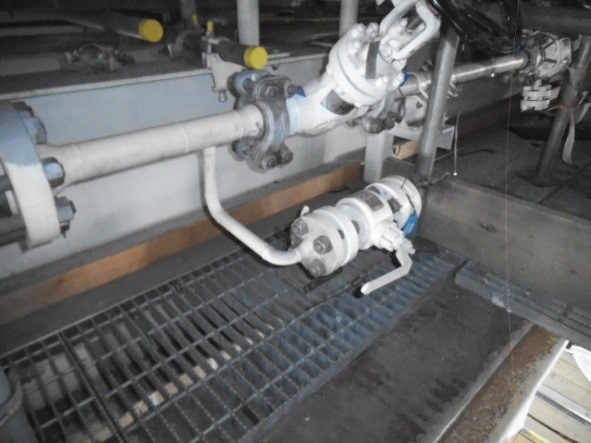 |
| Small-bore connections are high-risk locations for piping vibration |
Around 80% of vibration-induced failures are associated with small-bore connections (SBCs). This is due to several reasons:
- Stress concentrations at the weld to the main pipe or vessel
- Large unsupported valves
- Lack of evaluation of vibration and fatigue risk, beyond a reactive approach after a failure
- Disconnects between the SBC design intent and site fabrication, particularly regarding local support/bracing
The remaining 20% are generally associated with parent pipe girth weld failure.
1.4 Where does piping vibration come from?
Two main factors affect vibration: the strength of the excitation and the flexibility of the piping system. Therefore, there are always two methods to solve piping vibration problems: reduce the level of excitation to which the piping system is exposed or support the piping system so that it can withstand the applied dynamic forces.
The excitation mechanisms that cause vibration originate from three main sources:
- Acoustic/pulsation – time-varying changes in fluid pressure
- Momentum – time-varying changes in fluid density and velocity
- Machinery – unbalanced forces from operating machinery
| Acoustic/Pulsation | Momentum | Machinery |
|---|---|---|
|
|
|
1.5 How can I address piping vibration?
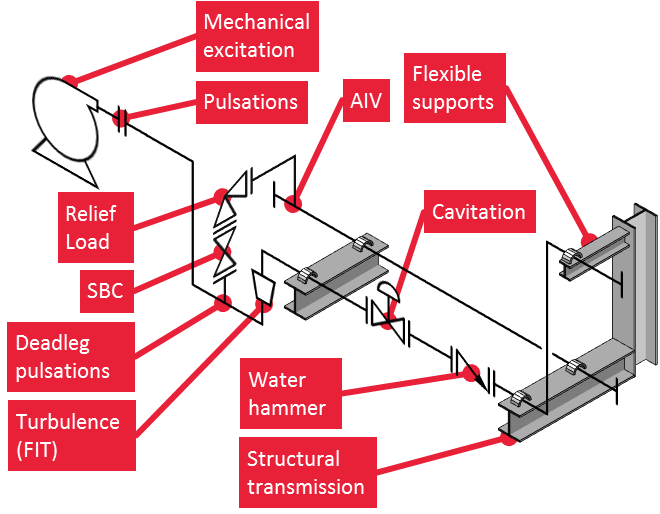 |
| Figure 1: Typical vibration risks in a piping system |
Risk-based assessments are the most cost-effective and reliable method to identify, quantify, inspect, measure and mitigate vibration and fatigue risks. These assessments look at the vibration integrity problems a facility faces, from start-up to shut-down.
The risk-based approach allows for a proactive management of vibration, only where there are risks present. Risk-based assessments integrate with and complement conventional integrity management programs that typically focus on corrosion/erosion – saving time and money for operators.
Design and in-service inspection standards typically highlight the risk posed by vibration but fail to provide appropriate management strategies, often leaving the identification of vibration issues to operators.
The Energy Institute document “Guidelines for the Avoidance of Vibration Induced Fatigue Failure in Process Pipework” is the industry standard for evaluating vibration integrity risks; Wood’s vibration experts were heavily involved in its development and understand its application.
Wood conducts risk-based assessments for major operators globally and can help augment your integrity management program to include vibration and start proactively addressing vibration risk.
2 Piping Vibration Risks in Onshore and Offshore Facilities
Gas Plants, Refineries, Pipelines, Pumping and Compressor Stations
There are a number of common piping risks to be evaluated in a piping assessment:
- Small-bore connections (SBCs) and branch attachments connect to the main process piping. These
small attachments, typically less than 8 cm (3 inches) in diameter, are the most common cause of integrity problems. Even if the main process piping has acceptable vibration, the vibration can be amplified on SBC causing failures. For large facilities, there can be thousands of SBCs that pose this integrity risk.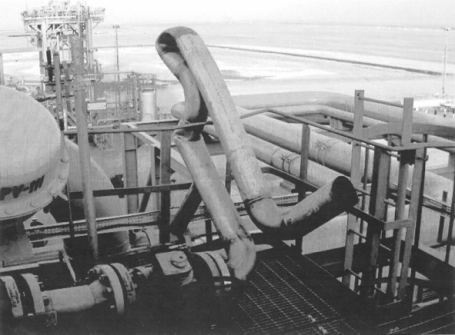
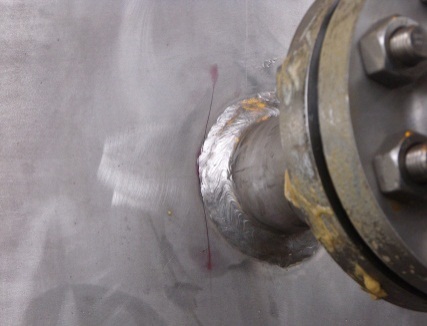
Figure 2: Piping failure examples
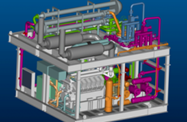
Figure 3: Example of compact piping layout on an FPSO - Process piping vibration can cause excessive vibratory stress on nozzles and tees leading to cracks.
- Failure of bypass lines, PSV or relief lines.
- Transient related events such as starting, stopping, emergency shutdown, or closing and opening valves can cause momentum changes in the gas or liquid (fluid hammer), resulting is excessive stress.
- Fretting and damage to pipe supports.
- Pipe stress analysis can be in conflict with vibration design requirements. Unless the design resolves the conflict between Mechanical Vibration Design (adding stiffness to control vibration) and the Piping Stress Analysis (increasing flexibility for thermal analysis), there are risks that the piping system will experience stress failures.
- Figure 3 example of compact piping layout on an FPSO
- Space on an offshore production facility is limited, and the piping layout is often very compact. As shown in Figure 3, the tight layout creates unique challenges in controlling piping vibration.
- The piping system is often elevated, connecting rotating machinery to overhead coolers, vessels, or headers. Elevated piping is typically much more flexible than rigidly connected or buried piping because of the difficulties in designing sufficiently stiff piping supports (that prevent vibration).
- Safety requirements often require “double block and bleed” valves on many small-bore connections. The geometry of these valve configurations and the heavy overhung weight creates much higher chances of excessive stress and failure.
3 Overview
Below is an overview of the Piping Integrity Assessment, which includes an Energy Institute AVIFF assessment, static stress analysis, and field vibration audit:
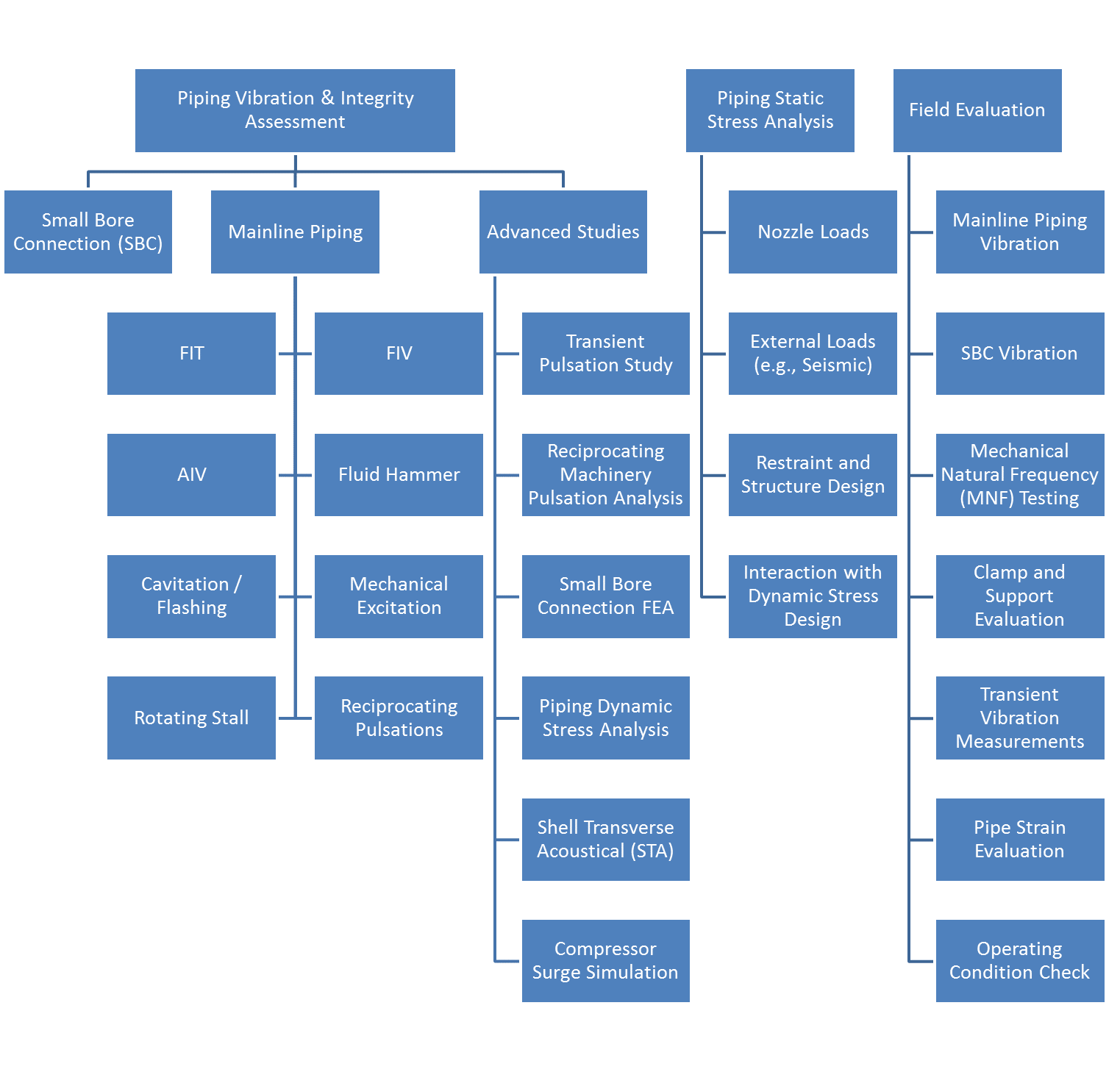
The table below summarizes when each study is required:
| Type | Analysis | System | When required |
|---|---|---|---|
| Energy Institute AVIFF Assessment |
Small-bore connection (SBC) | All fluids | All connections not reinforced or braced |
| Flow-Induced Turbulence (FIT) | All fluids | High flow systems with flexible and infrequent supports | |
| Flow-Induced Vibration (FIV) | Gas systems only | High flow systems with dead legs | |
| Acoustic-Induced Vibration (AIV) | Gas systems only | Pressure-reducing devices like valves and orifice plates | |
| Water hammer | Liquid systems only | Fast acting valves and emergency shutdown events | |
| Momentum change | Gas systems only | Blowdown or PSV releasing events | |
| Cavitation/flashing | Liquid systems only | Pressure-reducing devices like valves and pumps | |
| Static Stress Analysis | Piping stress analysis | All fluids | High temperature/pressure variation |
| Piping External Loads | All fluids | Local specifications and regulations (e.g., seismic zone) | |
| Restraint and Structure Design | All fluids | Flexible supports required, or high risk of piping vibration | |
| Machinery and equipment nozzle load analysis | All fluids | Machinery and equipment with low allowable nozzle loads | |
| Advanced Studies | Compressor surge control | Centrifugal compressor systems | Low inertia, high-pressure ratio, complex systems |
| Shell Transverse Acoustical (STA) | All fluids (but gas systems typically) | Thin-walled pipe near compressors and pumps | |
| Pulsation analysis | Reciprocating compressor systems | High pressure, high power systems | |
| Piping Dynamic Stress Analysis | Reciprocating machinery systems | High pressure, high power systems | |
| Transient pulsation | Liquid systems only | Many operating scenarios with multiple units on and offline | |
| Field Evaluation | Piping vibration (steady-state) | All fluids | Always |
| Mechanical Natural Frequency (MNF) Testing | All fluids | Areas of high vibration or poor support | |
| Piping vibration (transient) | All fluids | When transient events cause high vibrations | |
| Pipe strain | All fluids | When suspect due to high-frequency vibrations | |
| Small-bore connection vibration | All fluids | All connections not reinforced or braced |
This chart shows excitation sources studied in Wood's Piping Vibration Assessment
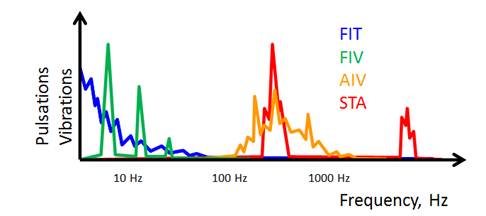 |
-FIT (Flow-Induced Turbulence) -FIV (Flow-Induced Vibration) -AIV (Acoustic-Induced Vibration) -STA (Shell Transverse Acoustical) |
4 Piping Vibration and Integrity Assessment - Scope
Wood recommends following the Energy Institute (EI) AVIFF Guideline as the high-level screening methodology since it has a rigorous and systematic process to address the main vibration risks. The assessment investigates both the main process piping and SBC. Both transient and steady state conditions should be included in the Piping Vibration and Integrity Assessment.
Wood has augmented the EI Guideline to provide superior integrity during the design and field testing phase. These additional features are based on our experience in evaluating piping vibration over the past 45 years.
Depending on the situation, the recommended scope may vary:
- For larger piping systems, the complete Piping Vibration and Integrity Assessment (as outlined below) is recommended.
- Where the scope is limited to Small-Bore Connections (SBC), or Branch Connections:
- For specific machine applications, the piping analysis may have a narrow scope:
- In many applications, a Pipe Stress Analysis is also required and is typically linked to the vibration service.
Owners and Engineering Companies (ECs) retain Wood early in the project to conduct this specialized work. Early involvement will save time and money, compared to making minor piping changes late in the design or construction process.
|
|
| Figure 4: Piping Integrity evaluation for refinery (1000+ process lines). Areas of high likelihood of failure were identified, and follow-up recommendations provided to mitigate vibration-induced risks leading to failures. |
The EI guideline uses a staged approach.
- A qualitative assessment is used as a screening tool to evaluate the excitation sources and rank order the risks;
- A quantitative assessment is then applied to the higher risk areas to determine the likelihood of failure. Specialist activities are involved to address high-risk areas and provide corrective actions.
- Onsite survey and measurements are required to refine the quantitative assessment for an as-built facility, or after a new facility is completed.
The initial focus would be on those systems that are considered to be safety and business critical. Other areas of the plant should be subsequently assessed to ensure all potential issues are identified.
Front End Engineering Design (FEED) Stage. A Vibration Design Review is recommended for the piping design and machinery systems (including proposed skids and foundation plan). This review provides valuable input to the vibration control strategies, required engineering tasks, and input to improve the design process. Deliverables include recommendations for the scope of vibration engineering and dynamics, methodology, guidelines, required scheduling and design considerations.
To ensure an integrated vibration design, the scope should include the piping and support systems for reciprocating compressors and pumps, centrifugal compressors and pumps, and the foundation or structural supports.
Detailed Design Stage. The scope of work will include:
- Assess piping system and identify locations with a high a likelihood of failure (LOF) per Energy Institute approach.
- Evaluate design standards for SBC and piping support assumptions for dynamic loads.
- Provide recommendations to reduce integrity risks.
- Implement specialized analysis where required (e.g., FIV, AIV, Pulsation Analysis, transient studies).
- Calculate allowable vibration limits at high LOF SBCs.
- Integrate the vibration analysis with other aspects of the project, namely reciprocating equipment, piping systems on centrifugal equipment, and dynamic analysis of foundations and structure where appropriate.
- Prepare test plan for field baseline measurements (commissioning and operations phase).
During Commissioning and Operation
|
Figure 5: Finite element analysis (FEA) used to calculate stress on small-bore piping. |
- Conduct a baseline vibration survey during operation to verify vibration levels. Measure mechanical natural frequencies (MNFs) of small-bore connections, inspect pipe supports for pipe strain and alignment and conduct transient vibration testing where required.
- Remedy remaining issues with recommendations and further troubleshooting, if required.
Conducting this work requires specialists who are experts in dynamics, and have the necessary experience, software tools, and field capabilities.
Read more for the appropriate vendor requirements
5 Wood Advantages
Wood has unique experience and skills in piping vibration, including the assessment of large-scale piping projects. Wood has the necessary qualifications to meet the above technical qualifications.
For nearly 50 years, the company has pioneered vibration analysis on machines and piping systems and is recognized as a global leader in this field.
Capabilities include:
|
Figure 6: Wood site testing program includes multichannel acquisition |
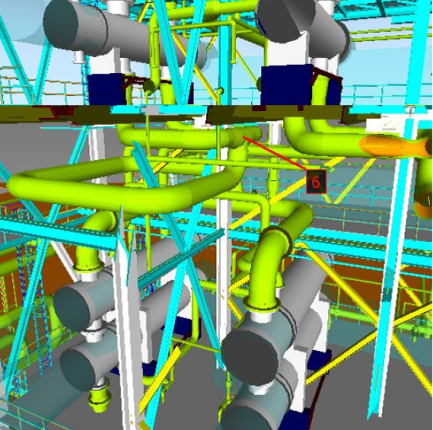 |
| Figure 7: Example of Piping Vibration Assessment at a refinery, including troubleshooting support |
- Experience on a wide range of piping systems, including refineries, petrochemical plants, pipeline stations, water injection units, and offshore platforms and FPSOs.
- Screening evaluation techniques to assess process piping and attached small-bore piping connections including cost-effective methods to determine if vibration-induced failure will occur.
- Implementation of major projects involving the Energy Institute Guideline and other applicable approaches and guidelines.
- Proprietary and field verified software tools to accurately model piping systems, assess vibration and stress, and evaluate the effectiveness of proposed modifications. Field proven tools and techniques are key success factors. Many examples exist where inexperience and standard FEA software do not produce accurate results.
- Involvement in three different large-scale projects with international research organizations, such as the Gas Machinery Research Council, aimed at finding solutions to piping and machine vibration.
- Development of custom designed products to address high-risk vibration areas.
- Consulting expertise in piping design, small-bore piping evaluation, root cause analysis, troubleshooting, and the specialized analysis needed to tackle high-risk problems.
6 Summary
To address the piping integrity risk due to vibration, many facility operators are implementing the Piping Vibration and Integrity Assessment (piping vibration audit). Avoiding these risks has many benefits to employees, managers, operations staff, shareholders, and society as a whole. Such benefits include:
- Increased safety
- Reduced environmental risk
- Increased uptime for operations
- Reduced unplanned downtime and failures
- More accurate integrity data for the Integrity Management System
- Overall reduced operating risk
7 Free webinar
 Learn how to better manage piping vibration fatigue threats in your projects and facilities.
Learn how to better manage piping vibration fatigue threats in your projects and facilities.
8a Related Information
- Primer - Piping Vibration Integrity (PDF)
- Why Include Vibration Integrity in Your Integrity Management Program?
- INTEGRATED APPROACH TO MANAGE VIBRATION
- Tips for Managing a successful vibration Project
- Piping Vibration Risks and Integrity Assessment (PDF)
- INTEGRITY EVALUATION OF SMALL BORE CONNECTIONS (BRANCH CONNECTIONS) (pdf)
- Training: Piping Vibration (pdf)
- SPECIFICATION: PIPING VIBRATION ASSESSMENT (EI STUDY)
- Energy Institute
8b Related Services
- Veridian – piping vibration assessment software
- Review and Design Support
- Small-Bore Connection (SBC) Assessment
- Acoustic-Induced Vibration (AIV) Analysis
- Flow-Induced Turbulence (FIT) Analysis
- Flow-Induced Vibration (FIV) Analysis
- Shell Transverse Acoustical (STA) Analysis
- Water Hammer Analysis
- Pipe Stress Analysis
- troubleshootinG (Root Cause AnalysiS)
9 Keywords
- Energy Institute Guideline 2008
- AVIFF
- Piping vibration
- Piping fatigue
- Vibration-induced piping failures
- Guideline for Vibration Induced Fatigue Failure
- ISBN 978 0 85293463 0
- Vibration on piping system
- BETA Machinery Analysis
More Info
Webinar: Shake, rattle and grow (2022 update) • Webinar: Controlling dynamic flexibility • Webinar: Piping and tubing vibration anomaly mgmt • Multi-channel vibration measurements • Vibration-induced fatigue management (Offshore Magazine) • Webinar: Shake, rattle and grow I (2022 update) • Avoiding vibration-induced fatigue failure • Examples of Piping Vibration (Video) • Pipe Support Stiffness, GMRC Project • Transient Conditions on Small-Bore Piping • Piping Vibration Design Considerations • Tips for Managing a Successful Vibration Project • Piping Vibration Examples • An Integrated Approach to Manage Vibration Risks •
Free webinar
Learn how to select and design vibration control solutions that work – using real-world data and case studies. Register now

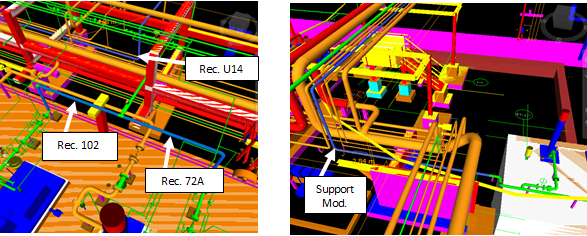
_to_calculate_stress_on_small_bore_piping.png)
